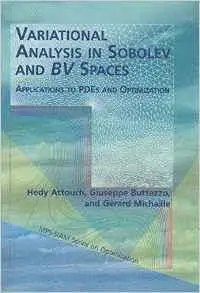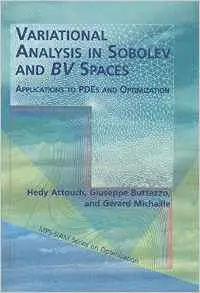Variational Analysis in Sobolev and BV Spaces: Applications to PDEs and Optimization (MPS-SIAM Series on Optimization) by Hedy Attouch
English | 2005 | ISBN: 0898716004 | 634 Pages | PDF | 35.76 MB
English | 2005 | ISBN: 0898716004 | 634 Pages | PDF | 35.76 MB
This self-contained book is excellent for graduate-level courses devoted to variational analysis, optimization, and partial differential equations (PDEs). It provides readers with a complete guide to problems in these fields as well as a detailed presentation of the most important tools and methods of variational analysis. New trends in variational analysis are also presented, along with recent developments and applications in this area. Variational Analysis in Sobolev and BV Spaces: Applications to PDEs and Optimization is not just for students, however; it is a comprehensive guide for anyone who wants to approach the field of variational analysis in a systematic way, starting from the most classical examples and working up to a research level. This book also contains several applications to problems in geometry, mechanics, elasticity, and computer vision, along with a complete list of references. Organized in a way that makes it accessible to a large audience, the book is divided into two parts. In Part I, classical Sobolev spaces are introduced and the reader is provided with the basic tools and methods of variational analysis and optimization in infinite dimensional spaces, with applications to classical PDE problems. The last chapters in Part I introduce finite element methods and spectral analysis methods, the two most powerful tools that allow the computation of approximate solutions of variational problems. In Part II, BV(W) spaces are introduced and new trends in variational analysis are presented. In this part the reader is introduced to the flexibility of variational methods.



